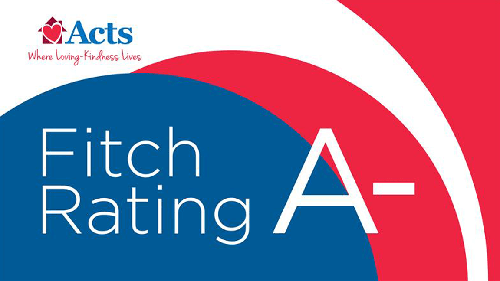Life Plan and Continuing Care Retirement Communities

When considering a continuing care retirement community, also known as a CCRC or "life plan" community, it's common to seek financial advice on such an impactful decision. Despite the financial peace of mind that the right CCRC can provide, it’s a sizeable investment that can leave some hesitant to make such an intimidating choice on their own.
Naturally, those going through the process of moving into one of these senior living facilities may turn to their financial advisors for guidance. Unfortunately, much like most of us in the general population, the nuances and advantages of CCRC contracts are not widely known by most financial advisors.
Even worse, many of the financial planning software programs available do not take into account the subtleties of the various long-term contracts and what this type of long-term healthcare investment could mean for their clients
in the long run.
This can result in hasty recommendations from financial advisors regarding moving to a continuing care senior living facility. Potentially dissuading their clients from a decision that could not only save them money in long-term healthcare costs, but also improve their quality of life throughout their retirement years.
Opportunities for Education on CCRC Financial Planning

As CCRCs continue becoming a more popular choice of senior living facility, educational opportunities for financial advisors who regularly advise older adults on retirement decisions must become more readily available.
According to Brad Breeding, a former certified financial advisor and cofounder of the CCRC resource center myLifeSite, long-term care contracts are not often part of financial advisors’ education and training, outside of a cursory overview.
“It simply isn’t taught as a core focus in the financial advisory or investment management world,” Breeding said. “One reason for this may be because life plan communities make up a small portion of the overall senior living market, and in general advisors don’t encounter this need among clients very frequently.”
Depending on the CCRC contract type, moving into a life plan community may require an entrance fee that reflects the type of residence and amenities available to the resident, but more importantly the long-term healthcare they are pre-paying at the time of move-in.
For example, a “Type A” contract (or life care contract), typically has the most sizable entrance fee because it also accounts for the long-term care the resident might need, such as assisted living, skilled care, and memory care. When an independent living resident moves to a CCRC under a life care contract, they are ensuring their monthly fees will remain steady when these healthcare services are needed, rather than inflating to current market costs. In essence, these individuals are pre-paying for future healthcare in today’s dollars.
Outside the Numbers

Along with the peace of mind that future long-term healthcare is prearranged, many CCRCs also offer a wide range of resort-like amenities, including restaurants, fitness centers, pools, activities, and entertainment. They also often include wellness programs that can benefit the body, mind, and spirit.
With a "Loneliness Epidemic" enveloping our country, the need for social relationships as we age is more important than ever. CCRCs can help play a vital role in providing these opportunities by keeping adults active and engaged.
These are contributing factors that can be overlooked by a financial advisor. So, when approached by a client to offer a "blessing" on the financial planning aspects of moving to a CCRC, some simply see a monetary chunk that would be coming out of the client's retirement portfolio, and in turn may advise against the move.
"It's important for advisors to realize that even if it's more expensive, for many people it may be worth the additional cost when you factor in wellness, socialization, peace of mind, etc.," Breeding said. Read more about his take on financial advisors and CCRCs.
Advice on Advice

Breeding says it's important that any advice a financial advisor provides for a retirement community move needs to be given with a full understanding of the details. This includes considering the finer details of the contract itself, along with the organization, its financial standing and strength.
"To recommend against a life plan community purely due to the existence of an entry fee would be short-sighted," he said. "This doesn't mean an entry fee community is always the right choice, but it also doesn't mean it's always a bad choice. A full understanding of other contract and pricing details in necessary to provide the most informed guidance."
While CCRCs with entrance fees may not be the right decision for everyone, they offer a beneficial solution for many. Breeding says that even if a life plan community is more expensive than another option, such as staying at home, it could still be the right decision in terms of lifestyle.
Retirement community financial advisors shouldn't only take the numbers into account, but also quality of life.
"Some things are worth paying for if it means a happier and healthier life," Breeding says. "An advisor's job is to objectively analyze their client's finances, but generally speaking, I believe they should avoid offering opinions without considering the potential value of peace of mind."
Discover more about the 26 life plan communities available with Acts Retirement-Life Communities.





